The Principia Libertas of Frater Tyler: Introduction
The tabletop miniature wargaming hobby is a fascinating diversion, combining elements of history (or lore), artistry, craftsmanship, gaming, and socializing. Originating in historical wargames firmly grounded in the real world, the hobby has since expanded to include imaginative and fantastical settings, broadening its appeal. Where historical wargamers might devote considerable time to researching their chosen forces, assembling and painting their chosen forces with painstaking attention to detail, hobbyists in fictional settings find considerably more freedom. Some settings might provide lore to guide those hobbyists who desired to "accurately" represent forces, but most fictional settings allow players to exercise creativity, either providing loose guidance from which hobbyists could deviate or enabling (and encouraging) hobbyists to create bespoke forces.
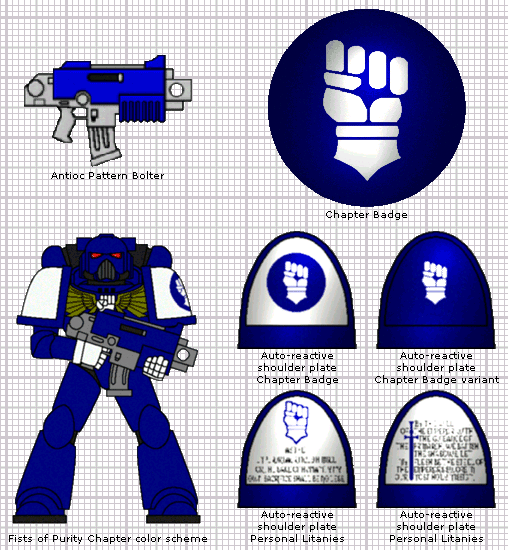
The first DIY Chapter for which I created an article was the Fists of Purity Chapter.
I'll cover this article/Chapter in the article about theme, but you can read the case study here.
One of the great strengths of the Warhammer 40,000 hobby is that it allows hobbyists to make the hobby their own. The diverse factions allow hobbyists to find those whose concepts and gameplay they find appealing, and many of these factions include a variety of sub-factions that serve as variations on themes, often presenting even more nuanced versions of the main factions. For example, the flagship faction of the setting is the Adeptus Astartes, the genetically engineered post-human soldiers organized into autonomous Chapters of about 1,000 warriors each. The iconic Chapter of the Adeptus Astartes is the Ultramarines, though this Chapter draws upon a Greco-Roman theme. In contrast, the Space Wolves Chapter bears a theme based upon the barbaric tribes of northern Europe, especially the Vikings, but also including the Rus, the Celts, and others. Similarly, other Chapters of the Adeptus Astartes have distinctive elements, offering hobbyists diverse choices for finding a Chapter that appeals to them, whether based on appearance, background, or rules. Moreover, Games Workshop has fleshed out only a small percentage of the 1,000 or so Chapters that are thought to exist. Many more are little more than a name and color scheme, and sometimes only a name. And fewer than half of the 1,000 or so Chapters have been named, giving hobbyists room to create custom Chapters. Similarly, the other factions of the setting allow members to create custom sub-factions, whether regiments of the Astra Militarum, cadres of the T'au Empire, Ork warbands, or any of the others.
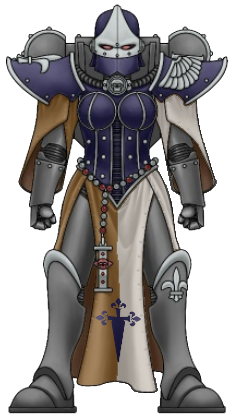
The Adepta Sororitas, though at one time more homogenous than the Adeptus Astartes,
provide room for creativity, too, such as with my Order of the Faithful Sword.
For many hobbyists, developing their own do-it-yourself (DIY) forces is very appealing, allowing them to flex their creative muscles. Whether they are attempting to work within the limitations and allowances of the known lore or they are mixing other genres or settings into the game, the process and its results can be very rewarding. There is no set process for DIY creation, however. In addition, there is no required end-state. Hobbyists are free to put in as much or as little work and time as they desire or have available, crafting a final product that satisfies their personal objectives. This freedom and lack of structure poses challenges, with many hobbyists struggling throughout the process. In addition, many strong-willed but well-meaning hobbyists will seek to tell others how they should create their DIYs, attempting to dictate their personal opinions as gospel truth. This often led to conflict and, unfortunately, abandoned efforts (or efforts taken elsewhere).
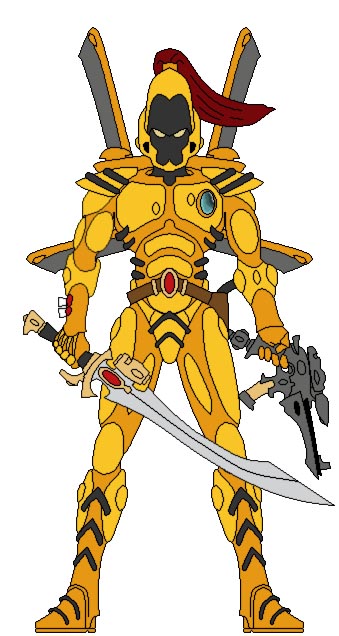
Hobbyists don't need to focus on articles similar to the Index Astartes articles. Instead, they might focus DIY
development on creating rules such as those I created for a bespoke Aspect Warrior Shrine, the Void Hornets of the Asuryani.
Building on some seminal guides that I found on the Internet back in the late '90s, I wrote the first significant article on DIY creation on the B&C. Over the last 25 years, other guides have appeared here at the B&C and elsewhere, including multiple instances of Games Workshop providing advice on the subject. Each of these guides has been very good, each in their own way, and each worthy of consultation and consideration. Over the last 25 years, my understanding of DIY creation has evolved. In addition, I have found myself at odds with advice that other members have given. In most cases, points of contention were largely based on either varying interpretations of lore or advice being, in my opinion, overly restrictive. In addition, there have been developments to the official lore, whether fleshing out details that were previously unknown or undeveloped or contradicting previous information. This series of blog entries serves as an expanded and revised presentation of my own advice on the subject of DIY creation, incorporating the advice from various posts I have made on the subject over the years. As with my previous efforts, this advice will use the Adeptus Astartes as examples, though the principles of DIY creation apply equally to the other factions of the setting. The blog entries serve as the initial drafts on each subject. These will be revised based on feedback, posted as articles available for both online reading and downloading. Hopefully, the advice I provide will help other hobbyists in their endeavors to create DIY forces. These are just my opinions, however, and prospective DIY creators should not take anything I say as gospel truth. In my articles you are sure to find things that you agree with as well as things with which you disagree. If I say anything that you disagree with, you should ignore it (and I'd love to see different viewpoints in the comments). In addition, prospective DIY creators should also consult other guides on the subject, both here at the B&C and elsewhere. Though I may disagree with some of the suggestions made in some of those other guides, there are probably many more things in them with which I agree. Regardless of my own opinions on them, and despite any misgivings I may have with them, they contain valuable advice from hobbyists who have devoted considerable time to the subject and you may find that they help you in your own endeavors.
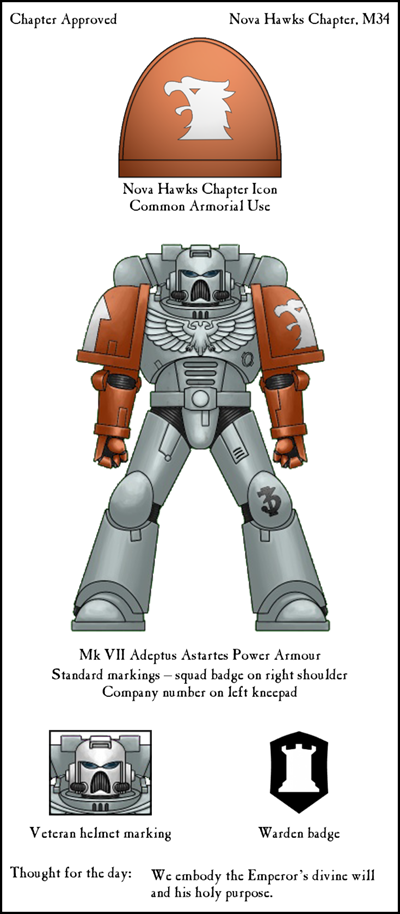
My most recently completed DIY, not including the Fire Hawks (my personal version
of the official Chapter you know as the Relictors) is the Nova Hawks Chapter.
I feel it necessary to explain the conceit of the title of the blog category, which will be incorporated into the series of blog entries and the resulting articles. "The Principia Libertas of Frater Tyler: A Guide to DIY Creation in the Warhammer 40,000 Setting" sounds a bit poncy, don't you think? The original article that I wrote 25+ years ago was given the rather pedestrian title of "DIY Chapters: Creating Your Own Space Marine Chapter for Warhammer 40,000." That article was later followed by "On the Nature of Crusades and DIY Chapters." For this updated version, knowing that I was expanding beyond what the earlier articles covered, I wanted a title that sounded like it came out of the setting, much the way Games Workshop has presented the Index Astartes (the series of articles named for the fictional "great book of the Legiones Astartes"), the Liber Sororitas (an article in White Dwarf Magazine that similarly appears to be named for an in-universe book about the Adepta Sororitas), etc. The Insignium Astartes book mentioned the "Liber Arcanum of Grand Marshall Tolof" as one of the documents in contention for the title of oldest known version of the Codex Astartes, and I liked the pseudo-Latin format (we love pseudo-Latin here at the B&C) as well as the inclusion of the author's name. I felt it was important for this series of articles to include my name, not for chest-thumping credit but to emphasize the fact this serves as one hobbyist's opinions and not as some definitive guide. The "Liber" portion of the title was great, especially since that's also the name of the forum in which we focus DIY development at the B&C, but I wanted the title to focus on freedom (Libertas) and "Liber Libertas" sounded dumb; so I replaced "Liber " with "Principia" (fundamental principles). As for my name, I went with "Frater Tyler" instead of my display name of Brother Tyler. Both allude to the same concept - I'm [just] a hobbyist whose opinion is neither more nor less authoritative than anyone else's. As Brother Tyler, however, I'm also the owner and head administrator of the site, with a level of authority over site issues. DIY creation is not a site issue thing, however, so I changed "Brother" to the Latin "Frater" which also serves as the core word in the title of most members of the site "Frater Domus." Similarly, the sub-title of the blog category is "A Guide to DIY Creation in the Warhammer 40,000 Setting." It's not "The Guide..." - it's simply "A Guide..." No individual can claim to provide "the" guide, after all. And though I'm focusing on the Adeptus Astartes for my examples, the advice I provide applies equally well to the other factions, so the sub-title focuses on "DIY Creation" without specifying any faction. At the end of the day, this series of articles should be considered as if written by a low-level scribe in the Adeptus Terra - worthy of being ignored or incorporated into your own DIY creation efforts as you see fit.
The post you are reading serves only as the introduction to this series of blog posts/articles. It will be followed by articles covering a range of subjects, including theme, format, etc.
The most important thing for any DIY creator to remember is that they are the ultimate arbiters of their process and outcomes. Other hobbyists' input and recommendations should be received with grace and dignity, and should be given due consideration. There is no requirement whatsoever to incorporate any one individual's feedback, especially if the DIY creator will not be pleased with the outcome. The final goal of DIY creation, after all, is to create a force that the creator will enjoy. Other hobbyists might have opinions about the end result, but they are not in any way affected by it.

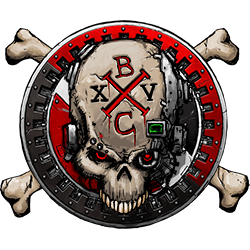


0 Comments
Recommended Comments
There are no comments to display.
Create an account or sign in to comment
You need to be a member in order to leave a comment
Create an account
Sign up for a new account in our community. It's easy!
Register a new accountSign in
Already have an account? Sign in here.
Sign In Now